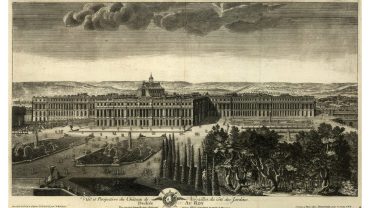In the annals of American history, few mysteries have captivated and puzzled historians as much as the enigma of the Roanoke disappearance. Nestled off the modern-day coast of North Carolina, Roanoke Island was the site of the first attempted permanent English settlement in the New World.
Funded by Sir Walter Raleigh in the late sixteenth century, the Roanoke colony was meant to be a beacon of English imperial ambitions, a stake in the fertile soils of the New World, and a strategic foothold against the Spanish. Yet, despite these lofty aims, it would forever be remembered not for its establishment, but for its eerie disappearance.
What tragedy befell the settlers? What caused the Roanoke settlement to vanish without a trace? Was it disease, conflict with local indigenous tribes, or perhaps a failed attempt to relocate?
Over the centuries, countless theories have emerged attempting to unravel this puzzle. As we delve deeper into the mystery of Roanoke, we’ll journey through the enthralling narratives, the hints scattered through time, and the unanswered questions which endure to this day.
Let’s dive into the murky waters of early American history as we attempt to shed light on one of the world’s most perplexing conundrums.
The History of the Roanoke Settlement
In 1583, the English staked their claim on Newfoundland, marking it as North America’s first English territory. Subsequently, Sir Walter Raleigh initiated – and funded – an effort to found a lasting settlement on Roanoke Island. However, due to insufficient supplies and strained relations with the indigenous population, the endeavour faltered, leading the settlers to depart.
Four years later, in 1587, they were back. Led this time by explorer and cartographer John White, who had been appointed governor of the new settlement, around 115 men, women and children established the Roanoke colony. It was intended to be the first permanent English occupation in the New World.
The Roanoke settlement held a clear purpose. As England jostled for global dominance against its rivals, especially Spain, establishing colonies in the New World was of vital strategic importance. Beyond the military and strategic reasons, the allure of newfound resources and the opportunity for trade and wealth beckoned. Roanoke, in this grand design, was envisioned as the preliminary step, the testbed, for English colonial endeavours in America.
White was so confident of the success of the new colony he took his wife and pregnant daughter Eleanor White Dare. Indeed a few short weeks after their arrival, Eleanor gave birth to a daughter named Virginia. It’s believed the child was the first English baby born in what was to become the United States of America.
But the colony was struggling. White returned to England to gather supplies. Yet when he arrived back in England, the Anglo-Spanish War was well underway and Queen Elizabeth I commandeered every available ship to take on the might of the Spanish Armada. Returning to the Roanoke colony became less of a pressing concern.
He eventually returned in 1590 to discover an abandoned colony. The settlers who were supposed to greet the ship had vanished. The only clue to their fate was the word CROATOAN carved into a wooden post and CRO carved into a tree. The settlement was fortified but there was no sign of a struggle or a hurried departure.
Indeed it’s believed that White instructed the colonists that if they had to leave for any reason, they should leave a sign indicating their destination. The carvings seemed to be such a sign.
What happened to them? Where did they go? Will we ever find the truth about the lost colony of Roanoke?
The Mystery of Roanoke

The Baptism Of Virginia Dare (Credit: Hulton Archive via Getty Images)
The Roanoke disappearance remains one of history’s enduring mysteries. Over the years, several theories have been proposed to explain what might have happened to the settlers.
Croatoan Island
Understandably, White took the carving to mean the colonists had moved to Croatoan Island (modern-day Hatteras Island, approximately fifty miles due south). This was the home of the Croatoan people, with whom the settlers had established relatively friendly relations. Due to adverse weather and other complications, however, White was unable to investigate Croatoan Island before returning to England.
Recent archaeological work on Hatteras Island has yielded some intriguing findings. Artefacts that could be consistent with late sixteenth-century English settlement, including pieces of English pottery and a signet ring, have been uncovered. While these discoveries aren’t definitive proof that the men, women and children of the Roanoke colony relocated there, they do hint at some level of English presence or interaction with the indigenous population.
In addition, oral histories from local tribes suggest interaction with the English, and reports of indigenous people with distinctly European features have been passed down.
While these pieces of evidence suggest a possible move to Croatoan Island, it’s essential to note that they don’t provide a comprehensive or definitive answer to the fate of the Roanoke settlers. The mystery of Roanoke remains, but the Croatoan theory is among the most popular and plausible explanations given the available, although largely circumstantial, evidence.
The Possibility of Attack
Despite the fact there is almost no archaeological evidence to support either theory, it has been suggested that the settlers may have been attacked and killed either by locals, or the Spanish, who had settled in what we know today as Florida, perhaps with the intention to curb English expansion.
Relocation
Facing challenges at Roanoke, the settlers might have tried to relocate en masse to a more promising location. If they faced challenges such as a harsh winter or dwindling supplies during their relocation, they might have perished before establishing a new settlement.
Disease or Famine
The inhabitants of the Roanoke settlement could have succumbed to diseases or food shortages. While this doesn’t explain the complete absence of bodies or graves, it’s possible that any signs were simply overlooked or eroded over time.
The Dare Stones
One of the most intriguing elements of the mystery of Roanoke is the Dare Stones.
Between 1937 and 1941, a series of forty-eight inscribed stones were discovered, purportedly written by White’s daughter Eleanor Dare, a member of the Roanoke colony. They seemed to provide a narrative of the colony’s fate, answering one of the most mystifying questions in American history – what happened to the lost colony of Roanoke? But their authenticity is widely doubted, and most historians consider them a controversial, yet elaborate, hoax.
The first stone was found in 1937 by a man named Louis Hammond. He claimed to have discovered it about eighty miles west of where the Roanoke settlement was established. This stone, larger than the others, was inscribed with a message that was allegedly from Eleanor Dare. The message detailed the death of her husband and daughter and mentioned hostility from ‘natives’ leading to the deaths of a number of her fellow settlers. Indeed it states that only twenty-four are left. This stone was also believed to have referenced a second stone, describing the location of a mass grave.

Read More About: Mysteries
The Mystery of the Lost Dutchman Goldmine
Over the next few years, another forty-seven stones were found although they were all distinctly different from the first. It turned out that they were forgeries, made by Georgia stonecutter Bill Eberhardt, most likely sometime between 1938 and 1941.
While the forty-seven subsequent stones have been dismissed, there remains unanswered questions about the credibility of the first. Due to its unique nature and the specificity of its inscription, it sometimes receives more credence than the others, but its authenticity remains debated.
The story of the Dare Stones, in many ways, highlights the enduring fascination and allure of the lost colony of Roanoke. Over the centuries, the desire to solve this puzzle has given rise to numerous theories, claims, and, as seen with the Dare Stones, even hoaxes.
Indeed the stone remains as much of a mystery as the colony itself.
The Greatest Disappearing Act in History?
The tale of the Roanoke Colony, with its fascinating blend of historical intrigue and haunting absence, serves as a compelling reminder of the unpredictable nature of early colonial ventures.
From the hopeful establishment of what was meant to be a beacon of English influence in the New World to its eerie vanishing, the narrative remains incomplete, a puzzle with pieces lost to the sands of time.
Must Read
While modern archaeological endeavours and historical research continue to shed light on possible explanations, the definitive fate of the Roanoke settlement eludes us. The mystery of Roanoke underscores the challenges faced by these early settlers, the tumultuous interactions between the colonists and indigenous populations, and the vast uncertainties of a then-uncharted world.
As we reflect on this early chapter of American history, the story serves not just as a historical enigma but as a testament to the hopes and vulnerabilities of those who ventured into the unknown.












